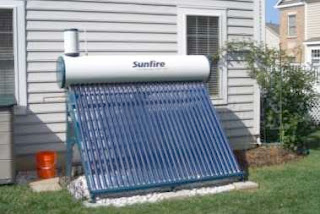
Diversified industrial manufacturer Eaton Corporation announced its collaboration with the Electric Power Research Institute (EPRI) and the Tennessee Valley Authority (TVA) for a prototype integrated solar-assisted electric vehicle charging station to be erected at EPRI's research laboratory in Knoxville, Tenn. Additional stations are planned for Oak Ridge National Laboratory, Nashville, Chattanooga and another site in Knoxville.
"Solar-assisted electric vehicle charging stations are a crucial step toward the development of a regional system of clean fuel for electric vehicles," said Tom Schafer, vice president and general manager, Eaton's Commercial Distribution Products Division. "We are confident that these stations will enable a cleaner transportation future with plug-in electric vehicles. Eaton is pleased to collaborate with EPRI and the TVA to ensure the success of these stations."
The collaboration comes on the heels of Eaton's creation of a new business unit that will be responsible for the overall direction and profitable growth of the emerging electric vehicle and transportation infrastructure business within Eaton's Electrical Sector. Eaton has named Tim Old the new business unit manager of this new Electric Transportation Infrastructure unit.
"The new business unit illustrates Eaton's commitment and ability to deliver this new technology to industry and consumers," said Schafer. "Tim Old brings considerable experience, business insight and leadership skills to this new position, and his expertise will help Eaton successfully launch the Electric Transportation Infrastructure business unit."
The prototype charging station used by EPRI and TVA, also known as a Smart Modal Area Recharge Terminal, or SMART(TM) station, will provide information on energy usage, the time when the equipment is used, the amount of solar-generated electricity produced and stored, and the potential impact of load clusters - when several vehicles are refueled at the same time - on distribution system reliability.
The collaboration will create a model charging facility that will charge electric vehicles quickly and reliably, and it will produce data to assist in implementing key components of a smart electrical grid. These components could include integrating renewables onto the grid, utilizing a battery storage system, assessing the impact on reliability of a distributed resource generation, testing advance metering infrastructure and analyzing electric vehicle supply equipment.
Eaton has been developing electrical and hybrid power systems for trucks and buses for more than 20 years. Eaton is the only company to offer hybrid-electric, as well as two hybrid hydraulic power system technologies, and the charging infrastructure for commercial and residential applications.
Eaton recently announced that it will collaborate with Takaoka Electric Manufacturing Company, Ltd. to develop and launch DC Quick Chargers, a key component in the charging of electric vehicle battery packs. The collaboration will enable Eaton to provide a complete line of charging stations across residential, commercial and industrial applications in North America.
Eaton, a global power management leader with comprehensive facilities, field service and support, is currently working to advance the electric vehicle charging infrastructure in Burlington, Ontario, and many other communities across North America. Eaton has a wide range of expertise in other markets that use free-standing electrical charging, including truck-stop electrification, ports, marinas, recreational vehicles, government, and major public-sector infrastructure.
The Electric Power Research Institute, Inc. conducts research and development relating to the generation, delivery and use of electricity for the benefit of the public. An independent, nonprofit organization, EPRI brings together its scientists and engineers as well as experts from academia and industry to help address challenges in electricity, including reliability, efficiency, health, safety and the environment. EPRI's members represent more than 90 percent of the electricity generated and delivered in the United States , and international participation extends to 40 countries. EPRI's principal offices and laboratories are located in Palo Alto, Calif.; Charlotte, N.C.; Knoxville, Tenn.; and Lenox, Mass.
The Tennessee Valley Authority, a corporation owned by the U.S. government, provides electricity for utility and business customers in most of Tennessee and parts of Alabama, Mississippi, Kentucky, Georgia, North Carolina and Virginia -- an area of 80,000 square miles with a population of 9 million. TVA operates 29 hydroelectric dams, 11 coal-fired power plants, three nuclear plants and 11 natural gas-fired power facilities and supplies up to 36,000 megawatts of electricity, delivered over 16,000 miles of high-voltage power lines.
Eaton's electrical business is a global leader in power distribution, power quality, control and industrial automation products and services. Eaton's global electrical product lines, including Cutler-Hammer(R), Moeller(R), Powerware(R), Holec(R), MEM(R), Santak(R), and MGE Office Protection Systems(TM) provide customer-driven PowerChain Management(R) solutions to serve the power system needs of the data center, industrial, institutional, government, utility, commercial, residential, and OEM markets worldwide.
Eaton Corporation is a diversified power management company with 2009 sales of $11.9 billion. Eaton is a global technology leader in electrical components and systems for power quality, distribution and control; hydraulics components, systems and services for industrial and mobile equipment; aerospace fuel, hydraulics and pneumatic systems for commercial and military use; and truck and automotive drivetrain and powertrain systems for performance, fuel economy and safety. Eaton has approximately 70,000 employees and sells products to customers in more than 150 countries.
SOURCE















